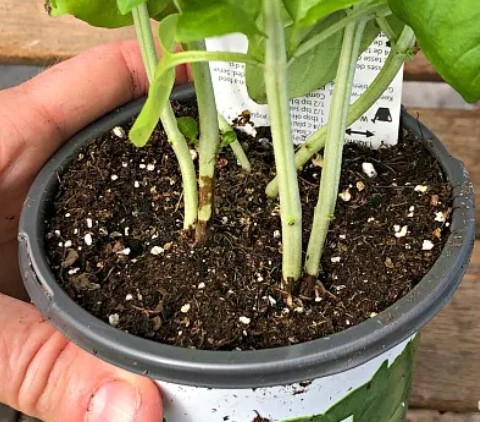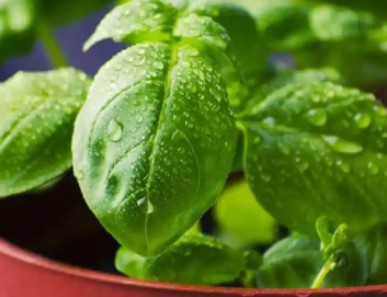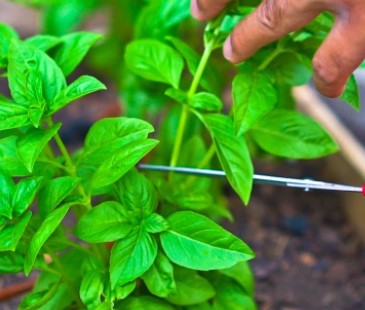Are you worried about your Basil plant health? Is it sagging and dying? Do you feel sad when you see your favorite herb is losing its life? Well... it's a matter of concern, but the good news is you have a solution. You only need to understand it attentively before applying. We know you love your plants and planting seeds and want them to be healthy and active instead of drooping and dying. For this, you need to take some steps to strengthen your plant if you notice they are wilting.
It's your responsibility to take extra care of your favorite plants. If you pay attention to them with your genuine love and affection, they will grow to their best, providing you with the most nutritious and healthy vegetables, fruits, and herbs for your kitchen. Read and learn all the vital steps that need to be taken for the health of your plant.
Contents
- Basil Plant Wilting and Dying - Save & Grow
- Wilting of Basil Plant
- Extra Moisture
- Dried Soil
- More Flowering
- Transplant Shock
- Dying of Basil Plant
- Overwatering
- Underwatering
- Cold Temperature
- Disease
- How to Keep Your Basil Plant Healthy and Alive
- Pruning
- Proper Watering
- Cutting off The Flowers
- Propagation
- FAQs
- What does bad Basil look like?
- Will Basil come back after wilting?
- Will the Basil plant come back to life?
- Conclusion
Basil Plant Wilting and Dying - Save & Grow
The Wilting and dying of the plant is the most abundant problem while growing the Basil plant. Plus point is we have a quick fix solution. Look through the following article to get enormous knowledge about the causes of wilting/dying of the plant and its possible solutions.
Wilting of Basil Plant
Wilting is said to be the dropping off of the plant leaves, which look like they are lifeless. Leaves bend downward and create a look of drooping. It not only ruins the overall look of a plant but also affects its internal health. Different causes are linked to the wilting of the Basil plant. The most commonly occurring reasons are mentioned here to let you know about your herb health care.
Extra Moisture
If in case your Basil pot is not well-drained or has holes in it for proper drainage, it could cause water accumulation in the roots and bottom-most part of the plant. This too much moisture results in wilting of the leaves. Extra moisture is not suitable for herbaceous plants.
Dried Soil

If your pot is small, the soil gets dry more quickly because of the hot weather outside. This could be another cause of the bending down of the leaves. This will result in a lack of water in the xylem tissues, and the leaves would not be rigid anymore. They would not look active and healthy but wilted. I would suggest you grow Basil on a larger pot or directly on your garden's surface. This would enable more water drainage and more significant air passage, which decreases the possibility of wilting.
More Flowering
When your Basil plant starts producing flowers, the leaves wilting can occur because the production of flowers results in a lack of nutrition in the leaves as flowers absorb all the necessary nutrients. This less nutrition can cause wilting of the leaves severely.
Transplant Shock
When you shift your plant from one place to another, your plant gets upset and can wilt because transplantation changes the plant's original site. This gives the plant trauma, and it can bend down as a reaction to transplant shock. It is not a worry, and the leaves will retain their shape within a few hours.
Dying of Basil Plant
When you notice your basil is no longer producing leaves and already present leaves are wilting continuously and breaking off from the branches, you have to be conscious about your plant as these are the symptoms of dying of the plant. Different causes result in the death of your Basil plant. Some of the most commonly occurring reasons are mentioned below. Read and understand them so that you would be able to get back to your lovely Basil leaves.
Overwatering
Suppose you are not keeping a proper balance in the watering system of the herbaceous plants. Your plants may become unhealthy and start to die. The most common cause of death in Basil plants is overwatering. The excess of water does not drain out and stays there continuously for some time. This damages the plant's root system, and no proper nutrition reaches the stem and leaves. This will result in death.
Underwatering

Similar to the effects of overwatering, if your plant lacks water in its water transport system. It would cause the death of the plant. Water is an essential part of the transport system in plants. If you do not correctly water the plant, it will not survive. The soil becomes dry and will damage the roots, indirectly damaging the entire plant.
Cold Temperature
Freezing temperatures for the basil plant are not appropriate. These herbaceous plants are warm-weather plants, and these can never be grown in cold climates. If your basil plant has to live below the temperature of 10 degrees Celsius, it would not live but die.
Disease
If your plant encounters any disease and is left untreated, it cannot fight the germs. This is another vital cause of dying in Basil Plants. The condition could be from any fungus in the soil. It could come from insects or any root rotting.
How to Keep Your Basil Plant Healthy and Alive
Pruning
Pruning is the cutting off of the extra branches and leaves of the Basil plant. Pruning at the correct time and trimming the plant at the right parts can help avoid wilting. This results in a bushier and healthier Basil plant, which minimizes the wilting and dying process of the plant.
Proper Watering
Never ignore the watering feature of the herbaceous plants. As they need accurate moisture to grow, neither excess water nor lack. Make sure you have the correct supply of water. And keep watering your plant whenever you feel the topmost layer of the soil dry. Ensure a proper drainage system in the plant so that water would not accumulate and cause wilting or dying.
Tip: Always keep in mind to shower your plant with an immense amount of water soon after the transplantation process. Watering will minimize transplant shock.
Cutting off The Flowers

If you are growing your Basil for eating purposes, always make sure you are not allowing it to grow flowers. Flowers catch all the nutrition and taste of the Basil plant. To avoid such cases, make sure to cut every single flower you see blooming on the Basil plant. So you would have the highest level of nutrients and tasteful leaves.
Propagation
Propagation is another method that can be helpful when your Basil is dying. Propagation is the spreading of a plant to the large surface of your garden. When you notice your plant is dying, make sure you propagate it correctly to the maximum surface area. You can use any method for producing more Basil plants, other propagation through seeds or propagation through cuttings. In this way, you would have a continuous supply of Basil for your kitchen.
FAQs
What does bad Basil look like?
Will Basil come back after wilting?
Will the Basil plant come back to life?
Conclusion
Wilting is not a significant matter of concern, but you have to be mentally prepared for the worst outcomes for your plant if the wilting continues. You can take steps to minimize the wilting of the leaves. Dying is alarming because if it prolongs, you would not have any Basil plant left. Keep in view and check your plants regularly. Prune your Basil plant every 3 to 4 weeks and cut flowers as soon as they are formed. With quick fixes, you can resolve the issue of wilting and dying in your plant.

